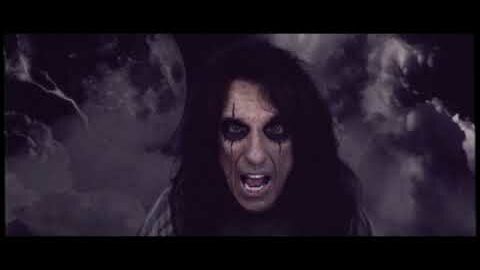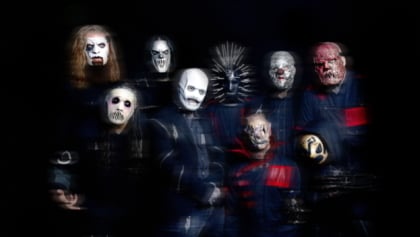NME Music News, Reviews, Videos, Galleries, Tickets and Blogs | NME.COM
Following its big finale, only one question really remains about The Masked Singer: how exactly did a show this bonkers make it onto television in the first place?
If you’ve somehow managed to miss ITV’s surrealist singing contest, here’s the general gist: enlist some C-list celebs, stick them in some nightmare-inducing costumes, hand them a microphone and sit back while they do karaoke in their awkward, oversized disguises, as judges and the viewing public attempt to guess their true identities.
Saturday night’s final attracted over 8 million viewers and featured finalists Nicola Roberts of Girls Aloud, comedian Jason Manford and opera singer Katherine Jenkins taking on songs by Lewis Capaldi, Little Mix and Ella Fitzgerald, as well as – quite inexplicably – ‘Supercalifragilisticexpialidocious’ from Mary Poppins, all the while dressed as a haunted bumblebee, steampunk hedgehog and an acid trip octopus.
Yet somehow, somehow, such a wild concept managed to unite the great Saturday night telly viewing public. The Masked Singer’s executive producer Derek McLean recently explained how the show was tailored to “appeal to an Instagram generation,” with the bizarre costumes, plus endless drip-fed hints and clues, all designed to get people talking on social media, while creating a sense of FOMO for those not in the know about what the bloody hell was going on. “Suddenly people looking on social media are going: ‘What are they talking about?’ And then they go [and watch] the show.”
The Masked Singer comes at a time when reality TV figures are on the decline. Big Brother was axed by Channel 5 in 2018 after viewing figures experienced a long-term slump, with an average of 1 million tuning into its final series (a far cry from its high of 5.1 million in 2004), while X-Factor has been forced to experiment with franchise-reinventing spin-offs due to record low viewing figures of its latter years. But The Masked Singer’s success is indicative of how reality shows are being reconfigured for modern times, taking risks and leaning towards ever more unorthodox premises in an attempt to win back viewers.
Take last year’s breakthrough show The Circle, which on the surface sounds like a grim, if not entirely sinister affair. After all, it’s pretty much Big Brother-meets-Catfish in the form of a Black Mirror episode: a group of contestants living in the same Salford block of flats, but never allowed to meet, instead exaggerating, fabricating, or outright lying about their identities over text, meaning that, as the show’s tagline puts in, “anyone can be anyone.”
But somehow The Circle managed to balance social satire (the most common, chin-stroking reaction being “maybe all our lives are virtual, after all!”) with genuinely interesting, funny and heartwarming moments. People you’d never expect to become friends bonded in an environment removed from the shackles of the real world. Then there was Fatboy Slim’s son inadvertently flirting with Richard out of Richard & Judy.
There’s even stranger out there too. How about the puntastic Flirty Dancing, a show where two would-be suitors spend their entire first date dancing in silence; Nailed It!, a chaotic farce of a cooking programme that’s been dubbed the ‘anti-Bake Off’ and involves the host herself trying to distract contestants; and 2019’s viral favourite Tidying Up with Marie Kondo, a show literally about cleaning your house.
And how could we miss out Dr Pimple Popper? The US show is an ever more gross-out version of Embarrassing Bodies and evidently came about when someone thought out loud about how what we really needed was a televised adaptation of the simple guilty pleasure of popping spots.
The decline of traditional, more linear, reality shows can be blamed on a multitude of factors: over-saturation and viewer fatigue of a genre that has been TV’s go-to medium for the best part of the past two decades and a failure to adapt to new ways that people are consuming entertainment, as well as the increased spotlight on how reality shows are failing contestants they propel into the spotlight.
In response, the genre has been forced to adapt to survive – allowing for more niche, more bizarre ideas coming to the surface in an attempt to get people talking and indeed watching again. Sure, there’s always been a fair share of ridiculous reality shows out there – shout outs to Naked Attraction and Sex Box – but we’ve seen things ramp up a gear in recent years.
While plenty of reality TV still orchestrates drama and peddles light public shaming, this new clutch of shows instead puts their focus on increasingly outlandish USPs, resulting in some very strange offerings. But if it means this or another season of Alan Sugar finding his next apprentice, then I guess we’ll take Teddy Sheringham dressed as a singing tree, thanks.
The post From ‘The Masked Singer’ and ‘The Circle’ to ‘Dr Pimple Popper’: how reality TV got weird appeared first on NME Music News, Reviews, Videos, Galleries, Tickets and Blogs | NME.COM.





